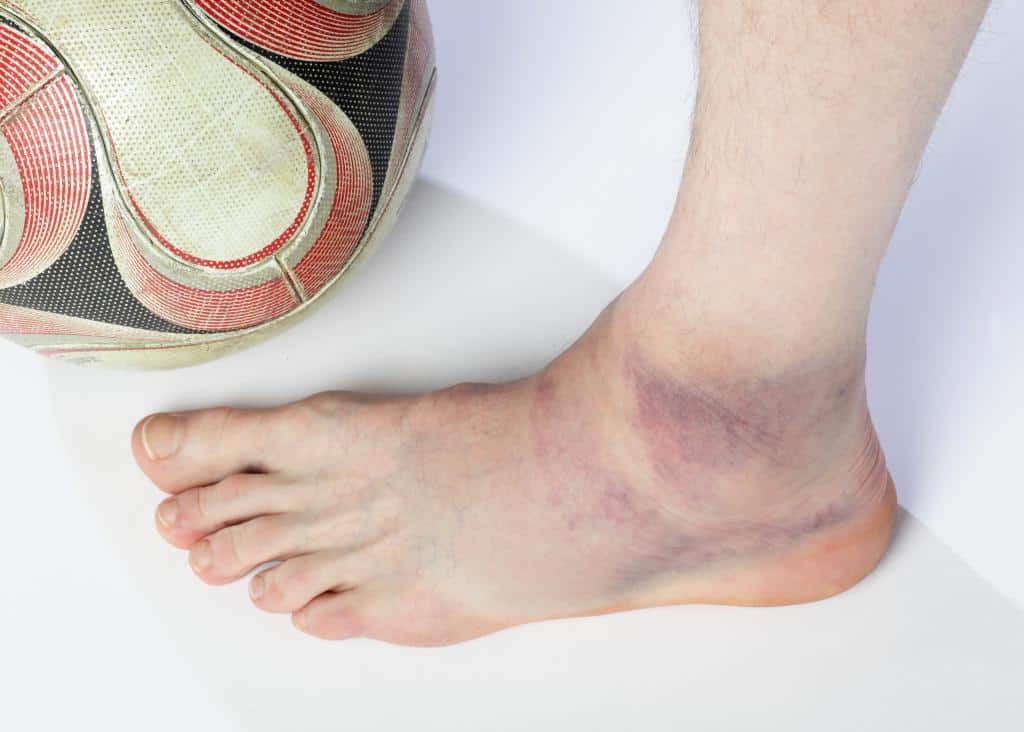
Contrast Baths
You can think of using a contrast bath as an enhanced icing routine. This approach involves soaking the lower extremity in alternate cold and warm baths. This can help greatly in reducing pain and swelling.
Here’s a description of a basic contrast bath protocol:
- Submerge the injured ankle in a bucket or bath of ice cold water for as long as you’re able to tolerate it. For most people this is usually about 2-3 minutes.
- Next, move the limb into a second bucket or bath filled with lukewarm water. Never use hot water. It isn’t necessary, and the limb may be numb after the initial ice bath and may be susceptible to burning.Soak for about 2-3 minutes.
- Follow this pattern for about 15 minutes. Always end on a cold soak for maximum swelling reduction. If possible, repeat this routine 2-3 times per day until full healing has occurred.
It’s thought by many sports physicians and physical therapists that this contrast bath combination works better than ice alone. When your tissue is exposed to cold, the blood vessels inside it shrink. When it’s exposed to warmth, they expand. By using alternating temperatures this effect can result in a pumping action which is thought to more effectively rid the area of excessive fluid.
Contrast baths also improve blood flow to the injured region, which speeds the healing process. Be sure to check with your doctor or physical therapist, but this technique can be effective for a wide variety of orthopedic (joint) injuries.
In addition to contrast baths…
RICE:
- REST the injured ankle. Use crutches to limit weight bearing.
- Apply ICE to limit excessive swelling.
- Use COMPRESSION wrappings such as ACE bandages to help with swelling and add much needed support.
- ELEVATE the ankle above heart-level when sitting or sleeping. This will help limit swelling and bruising.
What are contrast baths?
Contrast baths, also known as hot/cold immersion therapy or hydrotherapy, are a type of therapy that involves alternating between hot and cold water. The therapy is usually used to reduce inflammation, relieve pain, and improve circulation in specific parts of the body.
The therapy typically involves immersing the affected body part in hot water for a few minutes, followed by immersing the same body part in cold water for a few minutes. The process is usually repeated several times, with each cycle lasting between 2-5 minutes.
The hot water is usually between 100-110°F (38-43°C), while the cold water is usually between 55-65°F (12-18°C). The temperature and duration of each immersion can vary based on the specific needs of the patient and the area being treated.
Contrast baths work by causing the blood vessels to dilate and contract, which helps to increase blood flow to the affected area. This increased blood flow can help to reduce inflammation, relieve pain, and promote healing.
Contrast baths are commonly used to treat conditions such as arthritis, tendonitis, and muscle strains. However, they should only be used under the guidance of a healthcare professional, as they may not be appropriate for everyone.
Who should avoid them?
While contrast baths can be beneficial for many people, there are some individuals who should avoid them. Those with certain medical conditions, such as Raynaud’s disease or peripheral artery disease, should avoid using contrast baths as the hot and cold temperatures can worsen their symptoms. Additionally, people with open wounds or skin infections in the area being treated should avoid contrast baths to prevent further infection or complications. It is always recommended to consult with a healthcare professional before starting any new treatment or therapy to ensure it is safe and appropriate for your individual needs.
If you still have pain, or if your foot or ankle is swollen call your Podiatrist immediately, 878-313-3338

